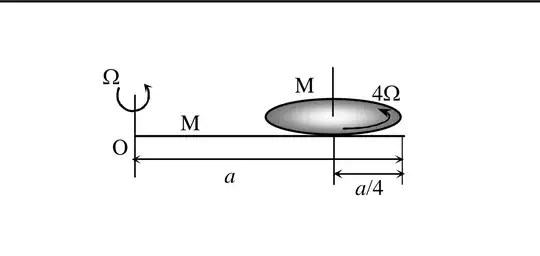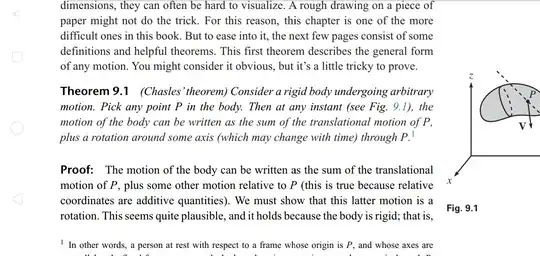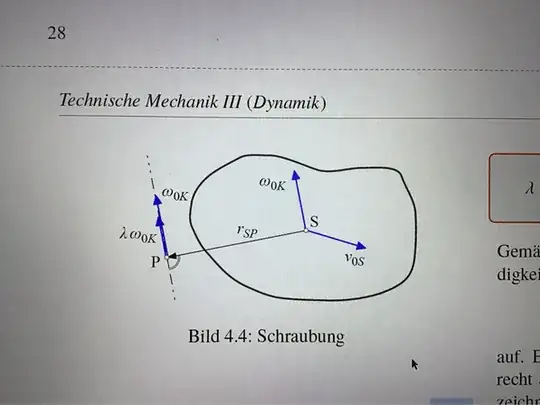The picture above is from David Morin's book Introduction To Classical Mechanics page 371
I couldn't comprehend what he meant by motion like
Would I be able to find velocity of any point if I know translation velocity of any point say P and $\omega$ angular velocity of axis passing through P?
Also I have seen people using this theorem on CENTER OF MASS but why on it why not some other point ?
EDIT
Below I am attaching another picture
In diagram all information is given and the shaded shape is circular disk and consider rod massless now I want to know
How would I do apply this theorem if I wanted to find angular momentum of body ($\alpha$) taking point P to be left end of the disk not the Centre Of Mass Of Disk

